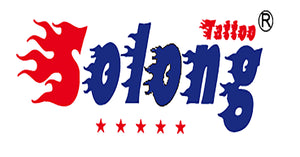Ensuring Safety Through Hygiene: The Critical Importance in Tattooing
Tattooing, an ancient art form celebrated worldwide, is not just about aesthetics and personal expression; it’s a procedure that requires the utmost attention to hygiene and safety standards. The intimate nature of tattooing, involving needles and ink penetrating the skin, presents a unique set of challenges and risks, particularly infections. This blog delves into why stringent hygiene standards are non-negotiable in the tattooing industry.
Why Hygiene is Non-Negotiable in Tattooing
The Risk of Infections:
Tattooing involves breaking the skin barrier, exposing individuals to potential blood-borne pathogens and infections such as hepatitis, HIV, and bacterial skin infections. The risk is twofold: it affects both the client and the artist. Therefore, employing rigorous hygiene practices is crucial to prevent these health hazards.
Standards and Best Practices for Hygiene:
- Sterilization of Equipment: The use of autoclaves to sterilize equipment before each use ensures that all instruments are free from microorganisms. Single-use needles and disposable gloves further minimize cross-contamination risks.
- Sanitization of Workspaces: Regular and thorough cleaning of the work area with medical-grade disinfectants prevents the spread of infections. This includes sanitizing surfaces, chairs, and any tools that might come into contact with the client or the tattoo artist.
- Personal Hygiene: Artists must maintain high personal hygiene levels, including hand hygiene before, during, and after the tattoo process. Using barrier methods like disposable gloves not only protects the artist but also the client from the transmission of infections.
- Client Education: Educating clients about the importance of aftercare and recognizing signs of infection is essential. Proper aftercare ensures the healing process proceeds smoothly, minimizing the risk of infection post-tattooing.
The Role of Regulatory Bodies:
Many countries have established strict regulations governing tattoo parlors and artists. These regulations often include mandatory training in cross-contamination prevention, regular health inspections, and licensing requirements. The role of these regulatory bodies is critical in maintaining high hygiene standards across the industry.
Conclusion:
Hygiene in tattooing is not an area where shortcuts can be made. The critical importance of maintaining high hygiene standards cannot be overstressed, as it ensures the safety and well-being of both the client and the artist. In the world of tattooing, beauty and artistry must go hand in hand with responsibility and care.









